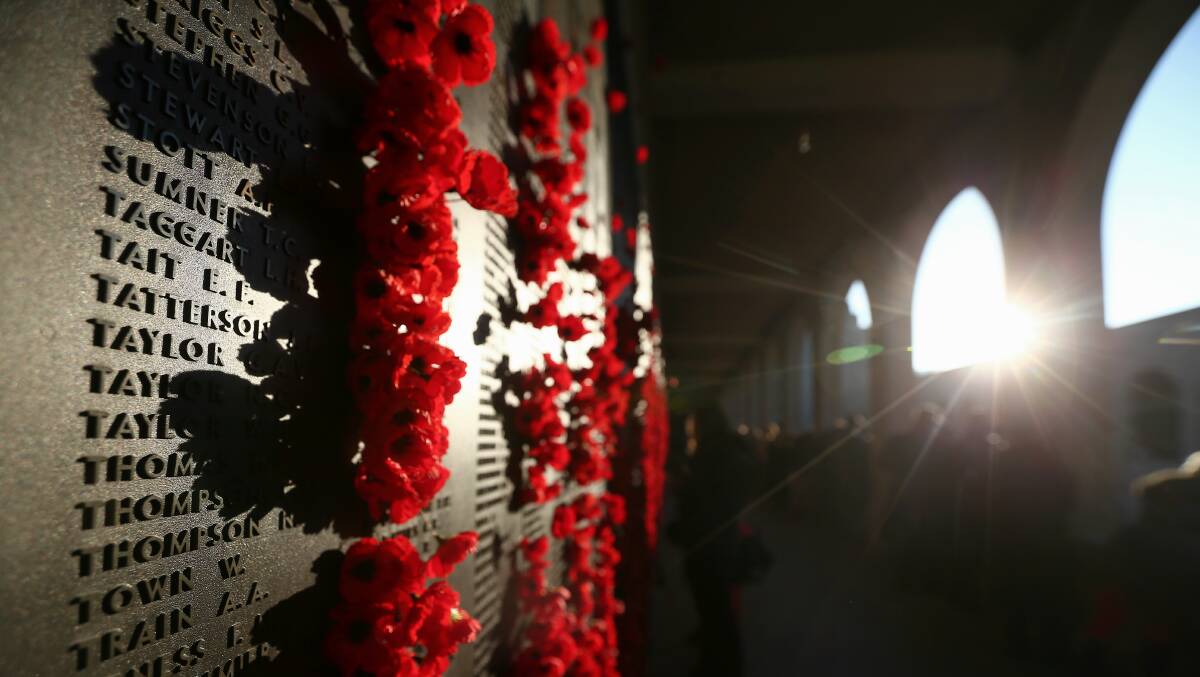The controversial proposal to spend nearly half a billion dollars on a massive expansion of the Australian War Memorial has been justified by director Brendan Nelson as providing a way for veterans to heal.
Subscribe now for unlimited access.
or signup to continue reading
Certainly the war memorial has an important place in recognising some past conflicts (despite omitting the frontier wars) and respecting and valuing veterans.

But the healing claim is an astonishing trivialisation of the complexity and long-term treatment needed to successfully treat mental illness such as post-traumatic stress disorder (PTSD) and depression.
The $498 million spent on the war memorial is $498 million not spent on veterans' health care.
As NSW RSL president and veteran James Brown commented in 2018: "We had 85 veteran suicides last year, we need to get that number down."
In April 2018 the government released the outcomes of its largest ever research project into the impact of Australian Defence Force participation on military personnel's lives.
It found nearly half of veterans experienced a mental disorder within five years of leaving: one in three suffering anxiety, 18 per cent PTSD and 12 per cent depression. One in five had suicidal thoughts, plans or attempts. Veterans were four times more likely to have serious issues with alcohol abuse.
If healing is the justification, then advocacy pushing for this expansion represents a very misplaced set of priorities; between caring for living defence force personnel and respecting those who have died.
The sheer magnitude of this proposal represents yet another step in the increasing romanticisation of war in our society.
Commemorating Anzac Day has shifted dramatically in the last few decades, from a solemn commemoration of respect for our diggers to much more extravagant events. Groups of young Australians head over to Gallipoli while politicians send out fervent multipage Anzac Day flyers.
Tim Costello once observed that Anzac had become almost a footy team, that everyone could barrack for. Elected representatives from all sides of politics find it useful to have a national story that is simple and everyone can identify with. Brendan Nelson employs the term "sacred".
Extremely generous spending on war commemoration dates back to the Hawke era. During the Anzac centenary Australia spent $552 million - compared to $110 million in the UK and $90 million in France.
Brendan Nelson states "new galleries will significantly expand Australia's peacekeeping story and tell what our nation does to prevent war in the first place. Solomon Islands RAMSI, East Timor, Iraq, Afghanistan, Northern Iraq and Syria".
Neither the 2003 Iraq invasion, which resulted in the deaths of more than a million Iraqis, nor the conflicts in Syria or Afghanistan should be described as peacekeeping missions.
If our nation is serious about prevention of war, then it would be better spending more on foreign aid, and improving funding for Australia's diplomatic service. Both of these are funded at shamefully low levels when compared with other OECD countries.
Another preventive measure in need of funding would be an Australian inquiry into why we joined the 2003 invasion of Iraq. It would give us the ability to analyse and learn, given the findings of the UK Chilcot inquiry that all peaceful options were not explored before the invasion. It is essential not to repeat such catastrophic mistakes.
Fewer wars would mean fewer damaged veterans and devastated families.
The war memorial has appropriately been criticised for accepting money from weapons companies - those who profit most from war.
The proposed expansion is largely about being able to display more weaponry. This works well for the weapons companies, which have an interest in us perpetually preparing for and going to war.
The construction of the proposed new galleries would involve the demolition of the current Anzac Hall, which has won architectural awards and is being actively defended by the Australian Institute of Architects. The memorial overall is already rated online as Canberra's number one tourist attraction. Why does it need such a huge overhaul?
The government would do better to heed the words of WWI war reporter Charles Bean and the Australian War Museum Committee on October 11, 1923, on the proposed building and collection:
"[It should] ... not be colossal in scale but rather a gem of its kind."
The war memorial clearly serves a purpose as a place to reflect on past conflicts. But the proposed expansion is inappropriate and comes at a huge cost. These funds could be so much better spent elsewhere.
Maybe this Anzac Day we could start by better addressing the major health needs of living veterans, and working on practical measures to reduce future conflicts.
Margaret Beavis is a Melbourne GP and immediate past president of the Medical Association for Prevention of War.

